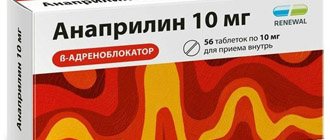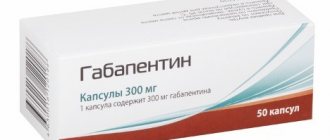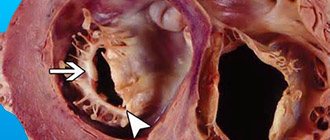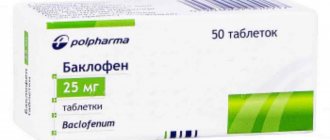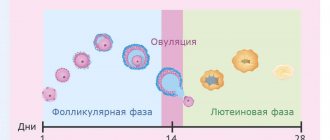Pharmacodynamics and pharmacokinetics
Pharmacodynamics
Inhibitor of factor Xa, a key protein that plays a role in blood clotting. To realize the effect of the active substance, the presence of antithrombin III . Inhibits platelet . As a result of the drug's action , prothrombin time aPTT and the formation of blood clots is prevented. If the drug is used in a therapeutic dose, then changes in these indicators are insignificant.
The use of Eliquis is indicated in the treatment of venous thrombosis and for the prevention of thromboembolism in patients with atrial fibrillation , as well as after endoprosthetics of lower extremity joints. During therapy, there is no need to constantly determine its concentration in the blood. The decision to continue treatment is made after testing anti-FXa activity.
Pharmacokinetics
Rapidly absorbed into the gastrointestinal tract. Bioavailability is 50%. Cmax is determined 3–4 hours after administration. For doses of 2.5 mg and 10 mg, the pharmacokinetics are linear. When taken at a dose of more than 25 mg, there is a decrease in absorption and a decrease in bioavailability. Communication with human blood proteins 87%. Metabolized by the isoenzyme CYP3A4/5 . About 25% of the dose is excreted through the intestines.
If renal function is impaired, Cmax in the blood does not change. There were also no significant changes in pharmacodynamic parameters when taking 5 mg of the drug in patients with mild to moderate liver failure. Studies have not been conducted in patients with severe liver failure. Elderly people experience higher concentrations of the active substance in the blood. In patients weighing 120 kg, the concentration in the blood is 30% lower than in patients weighing up to 85 kg.
Use during pregnancy and breastfeeding
Pregnancy
There are no data on the use of apixaban in pregnant women. During preclinical studies, no direct or indirect negative effects on reproductive function were detected. The use of apixaban during pregnancy is contraindicated.
Breastfeeding period
There is no information on the excretion of apixaban or its metabolites into breast milk in humans. Based on available data from animal studies, apixaban is excreted in breast milk. In studies in rats, drug concentrations in breast milk were many times higher than those in plasma (Cmax approximately 8 times higher, AUC approximately 30 times higher), which may indicate active transport of the drug into breast milk. A risk to breastfed infants cannot be excluded. If it is necessary to use Eliquis®, a decision should be made to stop taking the drug or stop breastfeeding.
Contraindications
- active bleeding;
- hypersensitivity;
- liver disease accompanied by a risk of bleeding;
- renal dysfunction;
- pregnancy;
- lactation;
- age up to 18 years.
Prescribed with caution during spinal puncture , epidural anesthesia , while taking inhibitors of the CYP3A4 isoenzyme ( Ketoconazole , voriconazole , Itraconazole ). The risk of bleeding increases with congenital bleeding disorders, thrombocytopenia and hemorrhagic stroke , exacerbations of peptic ulcer disease , and when used simultaneously with NSAIDs .
Side effects
Common adverse reactions:
- nausea;
- anemia;
- bleeding during surgery.
Rarely encountered adverse reactions:
- arterial hypotension;
- thrombocytopenia;
- hypersensitivity;
- hemorrhages in the eye tissue, rectal bleeding, hemoptysis, nasal and gingival bleeding;
- muscle hemorrhage;
- hematuria.
Contraindications, adverse reactions and indications for Eliquis therapy
The drug is prescribed to patients:
- with thrombosis of venous vessels and thromboembolism of the pulmonary arteries;
- to prevent blockage of veins by blood clots in hypertension, diabetes, stroke or heart failure;
- to prevent thrombosis after joint replacement in the lower extremities.
Elixvis is contraindicated:
- for bleeding, allergies to its component composition;
- hepatic pathologies with a high risk of blood vessel resolution;
- kidney dysfunction, pregnancy or breastfeeding.
The medicine is not used to treat minor patients. Increased caution is required during epidural anesthesia, spinal puncture, and concomitant use with Aoriconazole, Ketoconazole, Itraconazole. The likelihood of spontaneous bleeding is associated with congenital disorders of blood coagulation rate, hemorrhagic stroke, thrombocytopenia, exacerbation of ulcers, and the use of NSAIDs.
When treated with Elixvis, the following occur:
- anemic conditions, attacks of nausea;
- spontaneous bleeding - during surgery;
- drop in blood pressure;
- development of hypersensitivity;
- pinpoint hemorrhages in the tissue of the organs of vision, muscles;
- bleeding from the nasal passages, gums, rectum;
- blood particles in urine.
The occurrence of adverse reactions requires urgent consultation with the attending physician and a change in the treatment regimen.
Eliquis, instructions for use (Method and dosage)
Eliquis tablets are taken orally. The dosage depends on the disease.
After planned endoprosthetics, Eliquis 2.5 mg is prescribed twice a day and started 12 hours after the intervention. The duration of treatment is 38 days for hip replacement and 14 days for knee replacement.
For atrial fibrillation - 5 mg 2 times a day. Weight up to 60 kg and age 80 years - 2.5 mg twice a day.
In the treatment of DVT and PE - 7 days, 10 mg 2 times a day, subsequently - 5 mg twice.
To prevent relapses of PE and DVT , take 2.5 mg 2 times a day for 6 months.
Indications for use
— Prevention of venous thromboembolism in patients after planned hip or knee replacement.
— Prevention of stroke and systemic thromboembolism in adult patients with non-valvular atrial fibrillation who have one or more risk factors (such as a history of stroke or transient ischemic attack, age 75 years or older, hypertension, diabetes mellitus, symptomatic chronic heart failure ( functional class II and higher according to the NYHA classification)). The exception is patients with severe and moderate mitral stenosis or with artificial heart valves.
— Treatment of deep vein thrombosis (DVT), pulmonary embolism (PE), as well as prevention of relapses of DVT and PE.
Interaction
Combination with Ketoconazole (inhibitor of the CYP3A4 isoenzyme and P-glycoprotein ) leads to an increase in Cmax by almost 1.6 times, but no dose adjustment is required. The drugs Diltiazem , Amiodarone , Naproxen , Quinidine , Verapamil lead to an increase in the concentration of the active substance, but to a lesser extent (1.3-1.4 times). Dose adjustment is also not required.
Use with Rifampicin (inducer of the CYP3A4 isoenzyme ) leads to a decrease in Cmax of the active substance in the blood by 42%. The same effect should be expected when combined with phenytoin , phenobarbital and carbamazepine . in the treatment of PE and DVT .
When enoxaparin and apixaban are used together, an enhanced effect on FXa . significant interaction with acetylsalicylic acid was observed in healthy individuals.
The combination with Clopidogrel and acetylsalicylic acid does not lead to an increase in bleeding time and the parameters of the coagulation system remain the same as with apixaban monotherapy. However, such a triple combination of drugs is contraindicated in patients with acute coronary syndrome and concomitant diseases. In atrial fibrillation, the triple combination also leads to the risk of bleeding.
It is not recommended to use Heparin or its derivatives, fondaparinux , desirudin , Dipyridamole , sulfinpyrazone , dextran vitamin K antagonists and thrombolytic drugs due to the risk of bleeding.
clinically significant interaction with Atenolol and Famotidine was identified. However, combination with Atenolol is accompanied by a decrease in Cmax of apixaban. In studies, apixaban did not affect the pharmacokinetics of naproxen and digoxin .
Eliquis®
Risk of bleeding
As with other anticoagulants, patients receiving Eliquis should be closely monitored for signs of bleeding. In conditions with a high risk of bleeding, the drug is recommended to be used with caution. The use of Eliquis® should be discontinued if severe bleeding develops (see sections “Side effects” and “Overdose”).
Although apixaban therapy does not require continuous monitoring of apixaban blood concentrations, it may sometimes be appropriate to perform a calibrated quantitative assay for anti-Factor Xa activity in exceptional cases where data on apixaban exposure can inform clinical decisions, such as in cases of overdose and emergency surgery ( see section "Pharmacological properties").
Interaction with other drugs that affect hemostasis
Due to the high risk of bleeding, simultaneous use with any other anticoagulants is contraindicated (see section "Contraindications").
Concomitant use of Eliquis® with antiplatelet agents increases the risk of bleeding (see section “Interaction with other drugs”).
Caution should be exercised when using Eliquis® concomitantly with selective serotonin reuptake inhibitors and serotonin-norepinephrine (norepinephrine) reuptake inhibitors or NSAIDs, including ASA.
After surgery, it is not recommended to use other platelet aggregation inhibitors simultaneously with Eliquis® (see section “Interaction with other drugs”).
In a clinical trial in patients with atrial fibrillation with ACS and/or undergoing percutaneous coronary intervention (PCI) with a planned period of P2Y12 inhibitor treatment with or without ASA, the use of oral anticoagulants (apixaban or vitamin K antagonist - VKA) was studied for 6 months . The risk of major bleeding according to International Society on Thrombosis and Haemostasis (ISTH) criteria or clinically significant minor bleeding (CSMB) was statistically significantly lower with Eliquis® (24.7% per year) compared with AVK (35.8% per year).
Concomitant use of ASA increased the risk of major bleeding according to ISTH criteria or KZNB bleeding from 21.0% per year to 40.5% per year when an anticoagulant (apixaban or VKA) was added to P2Y12 inhibitor therapy. Specifically, the addition of ASA increased the risk of major bleeding or BAD in patients receiving apixaban and VKA, from 16.4% to 33.1% per year, and from 26.1% per year to 48.4% per year, respectively.
There was a statistically significant increase in the risk of bleeding with triple therapy of apixaban, acetylsalicylic acid (ASA) and clopidogrel in a clinical trial in patients with acute coronary syndrome without atrial fibrillation at high risk of thrombosis and several cardiac and non-cardiac comorbidities.
In another clinical trial in patients with atrial fibrillation, concomitant use of ASA resulted in an increased risk of major bleeding with both apixaban and warfarin. In this clinical study, combination therapy with two antiplatelet agents was rarely used.
The use of thrombolytic agents for the treatment of acute ischemic stroke
Experience with thrombolytic agents for the treatment of acute ischemic stroke in patients receiving apixaban is very limited.
Patients with artificial heart valves
The safety and effectiveness of the drug in patients with artificial heart valves with and without atrial fibrillation have not been studied. The use of Eliquis® is not recommended for this group of patients.
Surgical and invasive procedures
Eliquis should be discontinued at least 48 hours before elective surgery or an invasive procedure with a moderate or high risk of bleeding. This includes interventions for which the likelihood of clinically significant bleeding cannot be excluded or for which the risk of bleeding is unacceptable.
Eliquis should be discontinued at least 24 hours before elective surgery or an invasive procedure with a low risk of bleeding. This includes interventions where minimal, non-critical or easily controlled bleeding is expected.
If surgery or an invasive procedure cannot be delayed, it should be performed with appropriate caution, given the increased risk of bleeding. The risk of bleeding must be weighed against the need for emergency intervention. Nonvalvular atrial fibrillation usually does not require bridging therapy for 24 to 48 hours after stopping apixaban before surgery.
After an invasive procedure or surgery, Eliquis should be restarted as soon as possible, provided the clinical situation allows and sufficient hemostasis has been established (for information on cardioversion, see Dosage and Administration).
In patients with atrial fibrillation, there is no need to discontinue Eliquis therapy before catheter ablation.
Temporary cessation of therapy
Discontinuation of anticoagulants, including Eliquis®, due to active bleeding, elective surgery, or an invasive procedure increases the patient's risk of thrombosis. Interruptions in treatment should be avoided and if for any reason temporary cessation of anticoagulant therapy with Eliquis is required, it should be resumed as soon as possible.
Treatment of deep vein thrombosis and pulmonary embolism
It is not recommended to replace unfractionated heparin therapy with Eliquis® during the initiation of therapy in patients with PE with unstable hemodynamics, possible thrombolysis or pulmonary thrombectomy, since the safety and effectiveness of apixaban in these clinical situations have not been established. Patients with cancer
The efficacy and safety of apixaban in the treatment of DVT, treatment of PE, and prevention of recurrent DVT and PE (rVTE) in patients with actively progressing cancer have not been established.
Patients with kidney failure
Limited clinical data indicate that in patients with severe renal impairment (creatinine clearance 15-29 ml/min) plasma concentrations of apixaban are increased, which may increase the risk of bleeding. For the treatment of DVT, treatment of PE, and prevention of recurrent DVT and PE (rVTE), apixaban should be used in patients with severe renal impairment (creatinine clearance 15-29 ml/min) (see sections "Dosage and Administration" and "Pharmacological Properties"). use with caution.
For the prevention of stroke and systemic embolism in patients with UAF, patients with severe renal impairment (creatinine clearance 15-29 ml/min) and patients with serum creatinine ≥ 1.5 mg/dl (133 µmol/l) in combination with age ≥ 80 years or body weight ≤ 60 kg, the dose of apixaban should be reduced to 2.5 mg twice daily (see section "Dosage and Administration")
Due to the lack of clinical experience with apixaban in patients with creatinine clearance <15 ml/min or on dialysis, the use of apixaban in this group of patients is not recommended (see sections “Dosage and Administration” and “Pharmacological Properties”).
Elderly patients
With age, the risk of bleeding may increase (see section "Pharmacological properties").
Also, the simultaneous use of Eliquis® and ASA in elderly patients requires caution due to a potentially higher risk of bleeding.
Body mass
With low body weight (< 60 kg), the risk of bleeding may increase (see section "Pharmacological properties").
Patients with liver failure
Eliquis is contraindicated in patients with liver disease associated with coagulopathy and a clinically significant risk of bleeding (see section "Contraindications").
The drug is not recommended for patients with severe liver dysfunction (see section “Pharmacological properties”).
The drug should be used with caution in patients with mild to moderate liver dysfunction (stage A or B according to the Child-Pugh classification) (see sections “Dosage and Administration” and “Pharmacological Properties”).
Patients with elevated liver enzyme levels ALT/AST > 2 x ULN or total bilirubin ≥ 1.5 x ULN were excluded from clinical studies. Therefore, Eliquis® should be used with caution in this population (see section “Pharmacological properties”). Before starting to use Eliquis®, it is necessary to check biochemical indicators of liver function.
Interaction with cytochrome P450 inhibitors and P-gp inhibitors
The use of Eliquis is not recommended in patients receiving concomitant systemic treatment with potent inhibitors of CYP3A4 and P-glycoprotein, such as azole antimycotics (for example, ketoconazole, itraconazole, voriconazole and posaconazole) and HIV protease inhibitors (for example, ritonavir). These drugs may increase apixaban exposure by 2-fold (see Drug Interactions section) or greater in the presence of additional factors that also increase apixaban exposure (eg, severe renal impairment).
Interaction with inducers of the isoenzyme CYP3A4 and P-gp
Concomitant use of Eliquis with potent inducers of the CYP3A4 isoenzyme and P-gp inducers (for example, rifampicin, phenytoin, carbamazepine, phenobarbital and St. John's wort) may also lead to a decrease in the concentration of apixaban in the blood plasma (by approximately 50%).
In a clinical study involving patients with atrial fibrillation, a decrease in efficacy and an increased risk of bleeding was noted with simultaneous use of apixaban and potent inducers of the CYP3A4 and P-gp isoenzymes compared with the use of apixaban alone.
The following recommendations apply to patients receiving systemic therapy with potent inhibitors of the isoenzyme CYP3A4 and P-gp (see section "Interaction with other drugs"):
— for the purpose of preventing venous thromboembolism in patients after planned hip or knee replacement, preventing stroke and systemic thromboembolism in non-valvular atrial fibrillation, as well as for preventing relapses of DVT and PE, apixaban should be used with caution;
- for the treatment of DVT and PE, apixaban should not be used, as the effectiveness may be reduced.
Surgical interventions associated with hip fracture
The efficacy and safety of apixaban have not been evaluated in clinical trials in patients undergoing surgery for hip fracture. Therefore, it is not recommended for these patients.
Laboratory parameters
The effect of the mechanism of action of apixaban on blood coagulation parameters (eg, prothrombin time (PT), INR, and activated partial thromboplastin time (aPTT)) was as expected.
The observed changes in these blood clotting parameters at the intended therapeutic dose were small and had significant variability (see section "Pharmacological properties").
Information on excipients Eliquis® contains lactose. Patients with rare hereditary disorders such as galactose intolerance, Lapp lactase deficiency or glucose-galactose malabsorption should not take Eliquis.
Performing spinal, epidural anesthesia or punctures in patients receiving Eliquis®
When performing spinal or epidural anesthesia or diagnostic puncture of these areas in patients receiving antithrombotic drugs to prevent thromboembolism, there is a risk of developing epidural or spinal hematomas, which, in turn, can cause persistent or irreversible paralysis.
This risk may further increase when using an installed epidural catheter in the postoperative period or when using other drugs that affect hemostasis in parallel. Established epidural or subarachnoid catheters should be removed at least 5 hours before the first dose of Eliquis.
The risk may also increase with traumatic or repeated epidural or spinal punctures.
Patients should be monitored frequently for signs and symptoms of neurological deficits (eg, numbness or weakness in the legs, bowel or bladder dysfunction). If a neurological abnormality is detected, urgent diagnosis and treatment is necessary.
Before neuraxial intervention, the clinician should consider the potential benefit versus risk for patients who are or will be receiving anticoagulant therapy to prevent thrombosis.
There is no clinical experience with the use of apixaban in patients with an installed intrathecal or epidural catheter. If this situation is necessary, based on the pharmacokinetic properties of apixaban, an interval of 20-30 hours (i.e., 2 half-lives) should be maintained between the last dose of apixaban taken and catheter removal, thus at least one dose of apixaban should be skipped before removal of the catheter. The next dose of apixaban can be used no earlier than 5 hours after removing the catheter.
As with all new anticoagulant drugs, experience with apixaban in neuraxial blockade is limited and extreme caution should be exercised in this situation.
Patients with antiphospholipid syndrome
Direct oral anticoagulants (DOACs), including Eliquis, are not recommended for use in patients with known antiphospholipid syndrome (APS) and a history of thrombosis, especially if all three positive tests (lupus anticoagulant, anticardiolipin antibodies, and anti-beta antibodies) are present. -2- glycoprotein I). In these patients, the use of DOACs may result in an increased incidence of recurrent thrombotic events compared with vitamin K antagonists.
The effectiveness and safety of Eliquis® in patients with APS have not been established.
Analogs
Level 4 ATC code matches:
Xarelto
- Warfarin
- rivaroxaban
- Xarelto
- Dabigatran
- Pradaxa
- Edoxaban
Analogs are cheaper than Eliquis: Warfarin , the cost of which is much lower even taking into account INR tests (80-100 rubles for 50 tablets) and Dabigatran .
Eliquis reviews
Venous, arterial and cardiac thrombosis , thromboembolism are an important medical problem. About 10% of patients diagnosed with thromboembolism are at risk of another episode, which can be fatal. It is in such situations that this drug is prescribed, which has shown good results in reducing the risk of systemic embolism, especially in patients with concomitant congestive heart failure, a stroke , impaired renal function, as well as in the elderly.
Moreover, taking the drug is associated with a significantly lower risk of bleeding when compared with Warfarin , rivaroxaban or vitamin K . For example, the latter block the formation of many coagulation factors, while new direct anticoagulants, which include Eliquis, block only one stage of coagulation. Unlike Warfarin, they interact less with medications and their doses are easily adjusted.
This drug is convenient to use - a fixed dose twice a day every day without the need for laboratory monitoring. This is important for patients with atrial fibrillation who require lifelong anticoagulation to prevent cardioembolic stroke . Here are some reviews from patients who use this drug.
- “... Left ventricular fibrillation, atrial fibrillation. I was prescribed this drug, and so far I’m tolerating it well.”
- “... I take Eliquis 5 mg twice a day (prescribed by a cardiologist after stenting). There is a burning sensation in the stomach after taking it.”
- “...I have a permanent form of atrial fibrillation, the tachysystolic variant. In addition to other medications, I also take Eliquis 5 mg 2 times a day. I feel normal."
One of the complications of direct anticoagulant therapy is bleeding. To reduce its risk, it is necessary to reduce the period of antithrombotic therapy: up to 12 months after acute coronary syndrome and up to 6 months after stenting with a covered stent.
Eliquis price, where to buy
Where to buy Eliquis? You can purchase it in the pharmacy chain of the Russian Federation. The cost of 60 tablets of 5 mg in Moscow pharmacies ranges from 2,400 rubles. The same number of Eliquis tablets in St. Petersburg can be purchased for about 2,500 rubles.
- Online pharmacies in RussiaRussia
- Online pharmacies in UkraineUkraine
ZdravCity
- Eliquis tab.
p/o captivity. 5mg 20pcs Pfizer Ireland Pharmaceuticals/Pfizer Manufacturing Deutschland RUR 859 order - Eliquis tab. p/o film.5mg No. 60 Pfizer Ireland Pharmaceutical
RUB 2,417 order
- Eliquis tab. p/o captivity. 2.5mg 60pcs Pfizer Ireland Pharmaceuticals
RUB 2,554 order
Pharmacy Dialogue
- Eliquis tablets 2.5 mg No. 20Bristol Myers
RUB 835 order
- Eliquis tablets 2.5 mg No. 60Bristol Myers
RUB 2,431 order
- Eliquis tablets 5mg No. 60Bristol Myers
RUB 2,459 order
- Eliquis tablets 5mg No. 20Bristol Myers
RUR 851 order
show more
Pharmacy24
- Eliquis 5 mg No. 60 tablets Bristol-Myers Squibb Company, USA/Bristol-Myers Squibb S.r.l..Italy
1931 UAH.order - Eliquis 2.5 mg No. 20 tablets Bristol-Myers Squibb Company, USA/Bristol-Myers Squibb S.r.l..Italy
622 UAH. order

